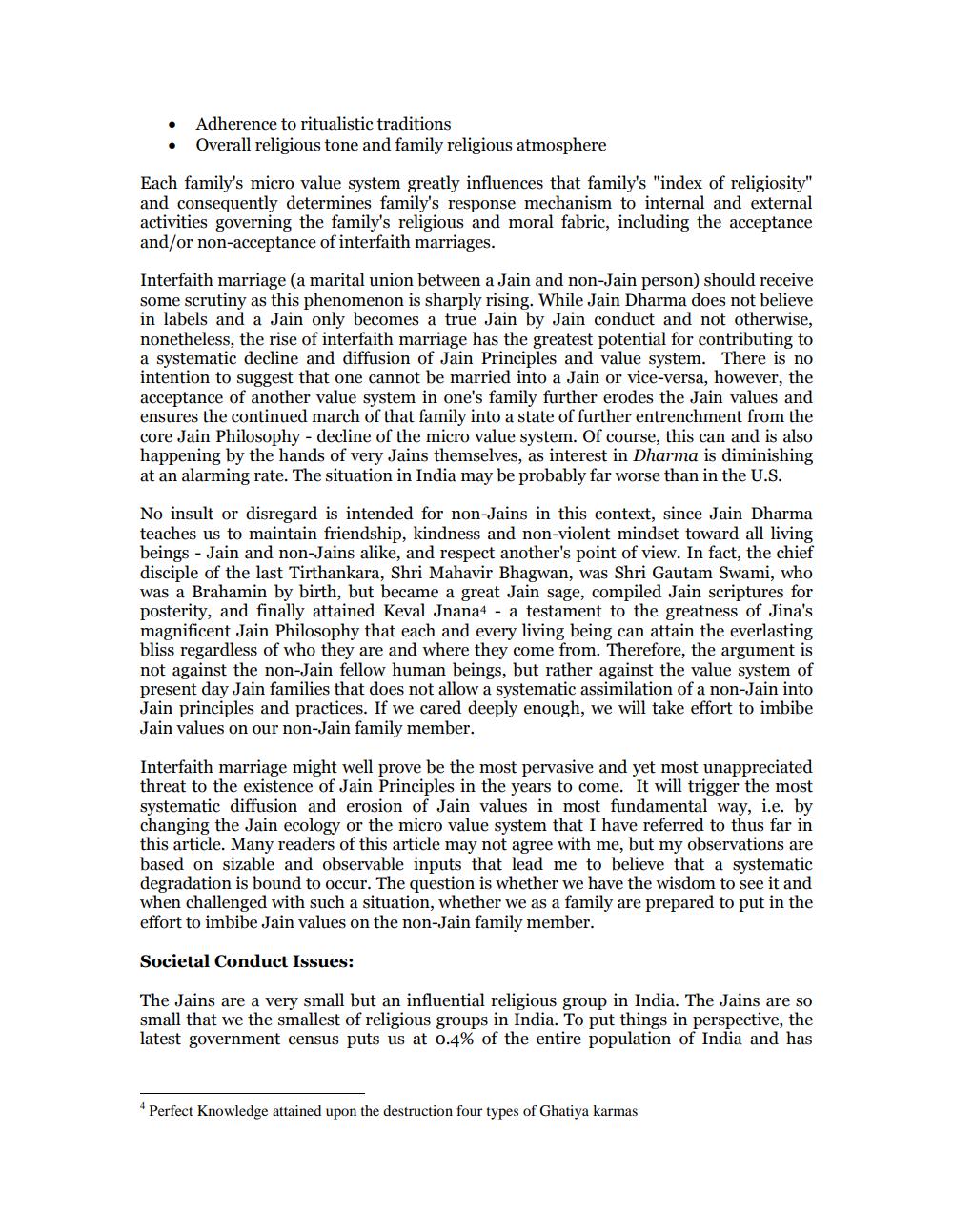________________
• •
Adherence to ritualistic traditions Overall religious tone and family religious atmosphere
Each family's micro value system greatly influences that family's "index of religiosity" and consequently determines family's response mechanism to internal and external activities governing the family's religious and moral fabric, including the acceptance and/or non-acceptance of interfaith marriages.
Interfaith marriage (a marital union between a Jain and non-Jain person) should receive some scrutiny as this phenomenon is sharply rising. While Jain Dharma does not believe in labels and a Jain only becomes a true Jain by Jain conduct and not otherwise, nonetheless, the rise of interfaith marriage has the greatest potential for contributing to a systematic decline and diffusion of Jain Principles and value system. There is no intention to suggest that one cannot be married into a Jain or vice-versa, however, the acceptance of another value system in one's family further erodes the Jain values and ensures the continued march of that family into a state of further entrenchment from the core Jain Philosophy - decline of the micro value system. Of course, this can and is also happening by the hands of very Jains themselves, as interest in Dharma is diminishing at an alarming rate. The situation in India may be probably far worse than in the U.S.
No insult or disregard is intended for non-Jains in this context, since Jain Dharma teaches us to maintain friendship, kindness and non-violent mindset toward all living beings - Jain and non-Jains alike, and respect another's point of view. In fact, the chief disciple of the last Tirthankara, Shri Mahavir Bhagwan, was Shri Gautam Swami, who was a Brahamin by birth, but became a great Jain sage, compiled Jain scriptures for posterity, and finally attained Keval Jnana4 - a testament to the greatness of Jina's magnificent Jain Philosophy that each and every living being can attain the everlasting bliss regardless of who they are and where they come from. Therefore, the argument is not against the non-Jain fellow human beings, but rather against the value system of present day Jain families that does not allow a systematic assimilation of a non-Jain into Jain principles and practices. If we cared deeply enough, we will take effort to imbibe Jain values on our non-Jain family member.
Interfaith marriage might well prove be the most pervasive and yet most unappreciated threat to the existence of Jain Principles in the years to come. It will trigger the most systematic diffusion and erosion of Jain values in most fundamental way, i.e. by changing the Jain ecology or the micro value system that I have referred to thus far in this article. Many readers of this article may not agree with me, but my observations are based on sizable and observable inputs that lead me to believe that a systematic degradation is bound to occur. The question is whether we have the wisdom to see it and when challenged with such a situation, whether we as a family are prepared to put in the effort to imbibe Jain values on the non-Jain family member.
Societal Conduct Issues:
The Jains are a very small but an influential religious group in India. The Jains are so small that we the smallest of religious groups in India. To put things in perspective, the latest government census puts us at 0.4% of the entire population of India and has
* Perfect Knowledge attained upon the destruction four types of Ghatiya karmas




